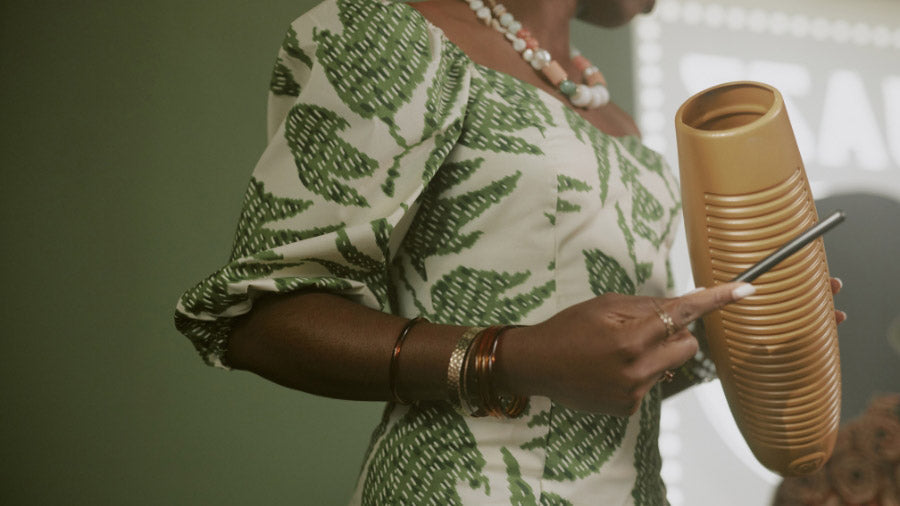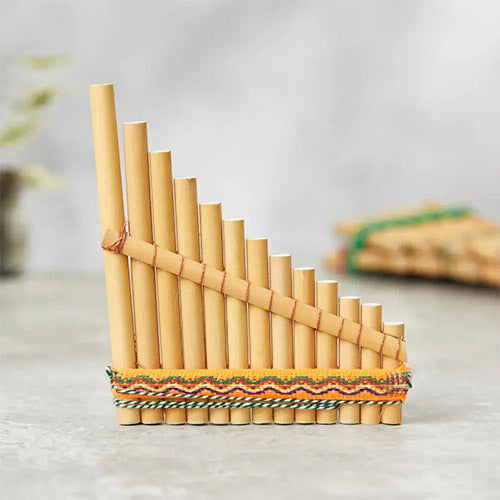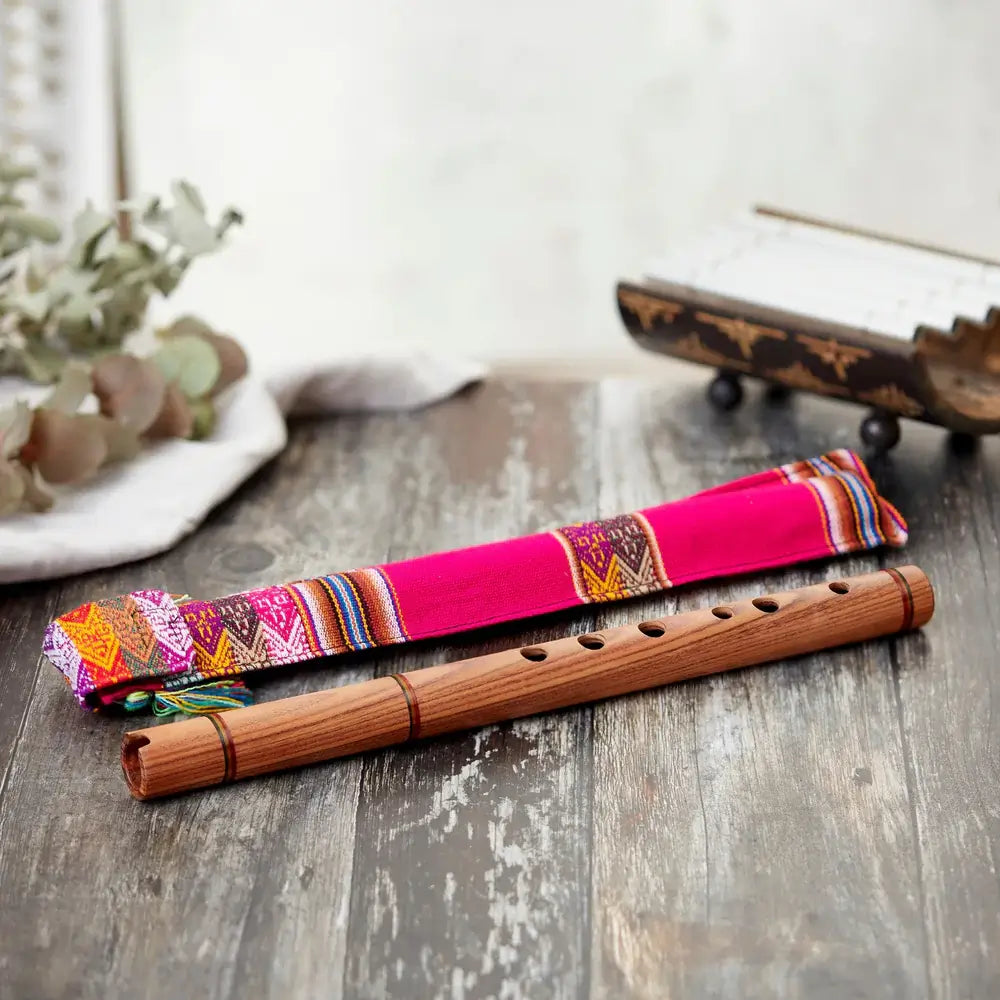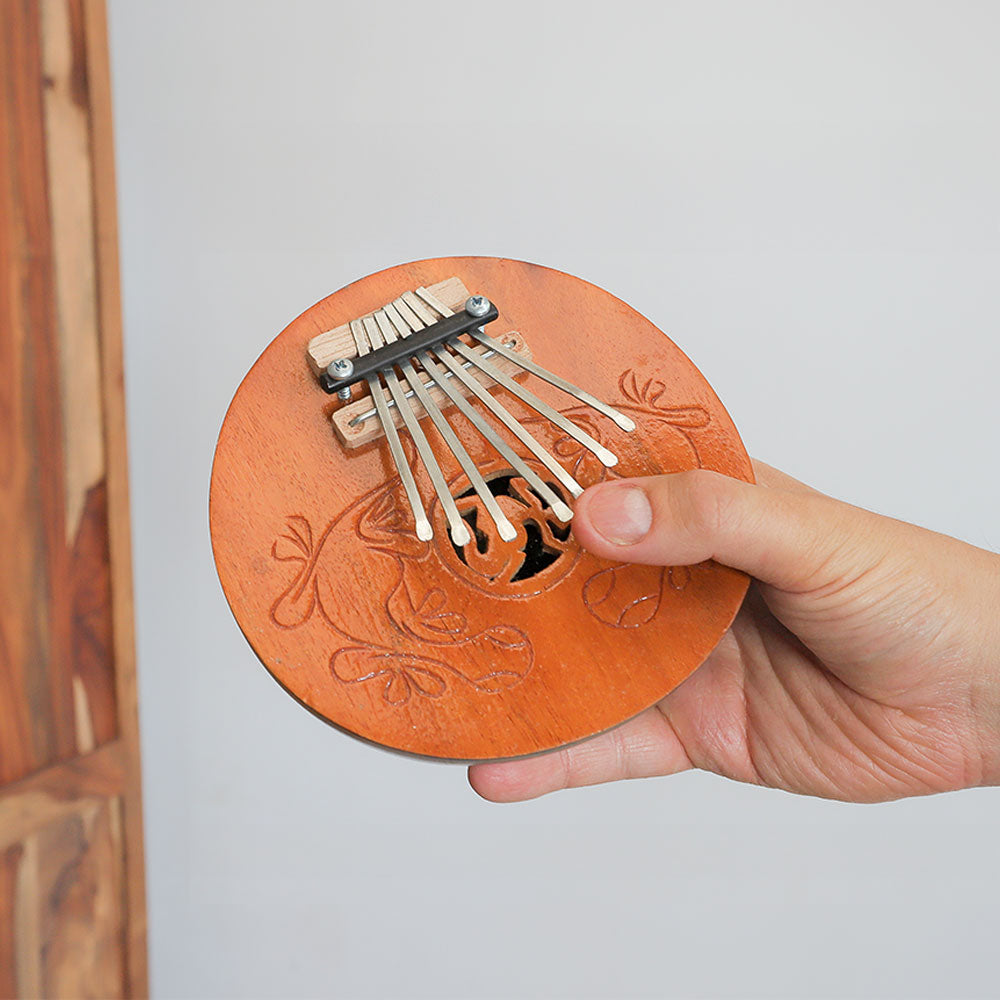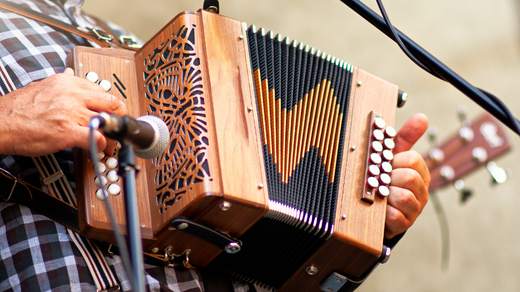A guiro is a Latin American percussion instrument made from a hollow gourd or wood, featuring ridges along one side that are scraped with a stick to produce rhythmic, raspy sounds. It’s commonly used to add texture and drive in salsa, cumbia, merengue, and other tropical music genres. Musicians, music educators, and percussionists use the guiro to enhance rhythm sections, often pairing it with maracas or drums. It’s especially popular in countries like Puerto Rico and Cuba, where it holds strong cultural significance in folk and popular music.
History of Guiro
The guiro has roots in indigenous Latin American cultures, particularly among the Taíno people of the Caribbean. While no specific inventor is recorded, the instrument has been used for centuries in ceremonial and musical contexts, dating back to pre-Columbian times. Originally crafted from dried gourds with carved grooves, it was used to accompany dances and rituals. Over time, as Afro-Latin music evolved, the guiro became a staple in genres like son, plena, and salsa, particularly in Puerto Rico and Cuba, where it remains a key symbol of cultural expression.
Types of Guiro
Guiros vary in material, size, and sound. Traditional versions are made from natural gourds, while modern ones use wood, plastic, or metal for durability and tone consistency. Common types include the classic Latin guiro with open ends, the Cuban-style metal guayo with a sharper, metallic sound, and smaller versions designed for educational or beginner use. Some guiros include finger holes for better grip, while others have built-in handles. Each type offers distinct tones—from warm and earthy to crisp and metallic—making them suitable for various music styles and performance needs.
Toko Guiro Shaker

★★★★★ - “Good value item. As described, arrived on time”. - Verified Buyer
The Toko Guiro Shaker is a versatile 3-in-1 instrument handcrafted in Bali from sustainable bamboo cane. Combining the functions of a shaker, guiro, and mini rainstick, it produces crisp, raspy, and soothing rain-like sounds thanks to its internal stones and chunky ridges. Finished with tribal-style dot painting and burnt etching, each piece is sealed with natural or black-painted softwood ends and sometimes coated in a non-toxic varnish for shine and protection. Lightweight and eco-friendly, this fair trade instrument is ideal for studio use, music lessons, or any percussion setup where creativity and texture are key.
Purchase the Toko Guiro Shaker Here.
Croaking Frog Guiro - 4"

★★★★★ - “Little creature with a big sound. This is an impressive percussive instrument adding a unique sound to music performance”. - Verified Buyer
This 4" Croaking Frog Guiro is a charming percussion instrument carved from sustainable acacia wood in northern Thailand. Simply run the included stick along its ridges to produce a realistic croaking sound, or tap its head for a playful ‘pock.’ Handcrafted through a detailed process of carving, sanding, kiln-drying (using leftover wood), and painting, each frog is tested for quality and finished with care. Fun, eco-friendly, and freestanding, it’s been a favorite for over a decade and makes a unique gift for musicians or anyone who loves quirky, natural instruments.
Purchase the Croaking Frog Guiro - 4" Here.
Gourd Guiro Shaker Rattle

★★★★★ - “Def will buy it again. Thank you, I love it, speedy delivery, and super service”. - Verified Buyer
The Gourd Guiro Shaker from Peru is a unique, eco-friendly percussion instrument made from natural, sustainable gourd and adorned with a handwoven cotton strap. Though it doesn't include a stick, it functions as a guiro, shaker, and rainstick—all in one. Each piece is handmade and varies in shape, size, and design, making it a distinctive addition to any music collection. Ideal for music education, self-expression, or as a thoughtful gift for children or adults, this fair-trade item supports both creative learning and environmentally conscious living.
Purchase the Gourd Guiro Shaker Rattle Here.
Tips for Choosing the Right Guiro
When choosing the right guiro, consider the material (wood, metal, plastic, or gourd), the size and shape of the ridges, and how comfortable it feels in your hand. Larger guiros with deeper grooves tend to produce louder, raspier tones, while smaller ones offer sharper, quicker sounds. If you’re a beginner or buying for casual use or school, a plastic guiro is durable and budget-friendly; for serious musicians or studio use, a wooden or handmade guiro offers richer tone and visual appeal. Guiros are suitable for percussionists, music teachers, students, and sound explorers of all ages.
The Pros and Cons of Buying a Second-Hand Guiro
Buying a second-hand guiro can be a smart way to save money, especially if it's a high-quality handmade piece with character and a broken-in tone. However, used instruments may show wear or damage—especially wooden ones that crack or warp without proper care. New guiros offer consistency, warranty, and cleanliness, while handmade options provide craftsmanship and individuality. If you're new to the instrument, consider starting with a reliable new one; but if you’re after something unique with soul, a well-maintained second-hand or artisan guiro might be your perfect match.
Unique Guiro Accessories
To enhance your guiro experience, consider accessories like different scraper sticks (metal, wood, or plastic) to vary your tone, padded carrying cases for protection during transport, and stand mounts if you want to play hands-free. For wooden guiros, occasional application of a natural oil like linseed or lemon oil can help preserve the wood and keep it from drying out. A cleaning cloth, a safe storage spot, and maybe even a custom grip or strap for comfort will all contribute to both the longevity of your guiro and the enjoyment of playing it.
Guiro in Popular Music
The guiro is most commonly found in Latin American music genres like salsa, cumbia, son, and merengue, where its rhythmic rasp gives life to upbeat grooves. It’s also made its way into funk, pop, and even modern fusion music. Famous artists and bands such as Santana, Gloria Estefan, and Marc Anthony have featured guiros in their songs to add texture and cultural flair. Whether supporting the rhythm section or adding a tropical accent, the guiro’s unmistakable sound helps bring energy and authenticity to the music.

